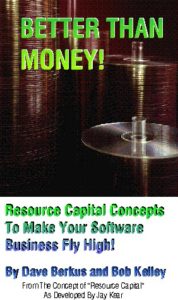[wdm_image_effects effect=”no_effect” animation=”zoomIn” shape=”no_shape” color=”#000″ social=”” title=”tax-plan” description=”tax-plan” id=”3288″ show=”hover” counter=”0″ size=”thumbnail”/]
When do you cross the line between honesty and dishonesty in tax planning? Is it ethical to allocate income between periods to take advantage of tax breaks? Can expenses be put off until the next period to increase income, or accelerated into this period by prepayment to decrease net income? Where do you draw the line, assuming no intent to defraud?
First, corporations are usually on an accrual accounting basis, meaning that income and expenses are accounted for as earned, not when the cash is received. (You, on the other hand, account for your individual income on a cash-accounting bases, counting the cash not the date of your earning or accrued expense. The difference: If you earn pay due December 31st and it is paid January second, you pay income tax on those earnings in the following year. But the corporation that pays you accrues the expense and takes the deduction in the year in which the income was earned or expense actually incurred.)
[Email readers, continue here…] It is perfectly legal to hold delivery of goods until after the start of the next period and take the income next year rather than this. It is a bit murky if you accelerate payment for incomplete services or even for products not yet received into this year to take the deduction from income early. In either an IRS audit or an accounting review or audit, the accelerated costs and payments will show as an accrual – a balance sheet item – that does not change income, just cash and an asset.
In other words, for the usual accrual-based business, there are fewer ways to affect the outcome than for a cash-accounting individual. There are lots of caveats here and certainly if the issue is critical to you, an accountant (rarely a bookkeeper) should guide you to the action that is both legal and strategic.
Please feel free to comment on this post in the field below. -Dave

 design and creation of metrics, flash reports, analytical reports and more from their bookkeepers. And at some early stages, a bookkeeper can prepare such information. It does not take long for a growing business and a knowledgeable CEO to quickly outgrow the lack of depth and sophistication such reporting usually offers, looking instead for deeper analytical tools.
design and creation of metrics, flash reports, analytical reports and more from their bookkeepers. And at some early stages, a bookkeeper can prepare such information. It does not take long for a growing business and a knowledgeable CEO to quickly outgrow the lack of depth and sophistication such reporting usually offers, looking instead for deeper analytical tools. advice they receive from their attorney highly enough not to doubt the conclusions or the experience behind the conclusions offered. And since attorneys are paid to protect, often they will give a litany of warnings about what could go wrong when accepting a contract clause that they have been trained to challenge.
advice they receive from their attorney highly enough not to doubt the conclusions or the experience behind the conclusions offered. And since attorneys are paid to protect, often they will give a litany of warnings about what could go wrong when accepting a contract clause that they have been trained to challenge. value to you and the company.
value to you and the company. “Is this just too little value for too much money?” – are adding to the dialogue in valuable ways and should be encouraged, not just tolerated.
“Is this just too little value for too much money?” – are adding to the dialogue in valuable ways and should be encouraged, not just tolerated. continuing theme, emphasizing the need for deep and wide relationships that the CEO and senior staff can call upon for advice and guidance. This is the time to elevate those insights to the level of highest value for the corporation, one that cannot be listed on a balance sheet nor included in an appraisal of corporate worth.
continuing theme, emphasizing the need for deep and wide relationships that the CEO and senior staff can call upon for advice and guidance. This is the time to elevate those insights to the level of highest value for the corporation, one that cannot be listed on a balance sheet nor included in an appraisal of corporate worth. depends upon lots of variables, including whether the company is in a fund-raising mode (in which case the CEO may be spending up to 80% of his or her time on this alone).
depends upon lots of variables, including whether the company is in a fund-raising mode (in which case the CEO may be spending up to 80% of his or her time on this alone). company as well as exploring the needs of the customer that might be satisfied by new product development. 15% typically is spent on direct management issues such as supervision of next level subordinates. 15% might be spent networking with those in the CEO’s relationship circle, including the roundtable organizations. 10% is typically spent networking with board members, usually with frequent phone calls, and preparing for board meetings. 10% is typical in exploring strategic concepts, reading about new developments in the industry and just spending quiet time contemplating opportunities.
company as well as exploring the needs of the customer that might be satisfied by new product development. 15% typically is spent on direct management issues such as supervision of next level subordinates. 15% might be spent networking with those in the CEO’s relationship circle, including the roundtable organizations. 10% is typically spent networking with board members, usually with frequent phone calls, and preparing for board meetings. 10% is typical in exploring strategic concepts, reading about new developments in the industry and just spending quiet time contemplating opportunities. informal group with no legal responsibilities, but one able to be called upon to act as business, industry and scientific advisors to you and the company.
informal group with no legal responsibilities, but one able to be called upon to act as business, industry and scientific advisors to you and the company. There is no limit to the number of individuals for such a board, but there is a practical limit to the amount of cash and / or stock to be allocated to these outside advisors. The rule of thumb for an advisory board member is to expect a half to a full day each year on site, typically in a strategic planning meeting with numerous members of the staff, as well as some reasonable number of phone calls from senior members of management during the year. Included in the “package” is the expectation that the advisor’s name will be freely used in the company’s marketing, a bio listed on the website, and occasional calls will come as references to the advisor from potential investors and others looking for deeper insight into the secret sauce of the company or state of the industry than can be provided by many on the inside.
There is no limit to the number of individuals for such a board, but there is a practical limit to the amount of cash and / or stock to be allocated to these outside advisors. The rule of thumb for an advisory board member is to expect a half to a full day each year on site, typically in a strategic planning meeting with numerous members of the staff, as well as some reasonable number of phone calls from senior members of management during the year. Included in the “package” is the expectation that the advisor’s name will be freely used in the company’s marketing, a bio listed on the website, and occasional calls will come as references to the advisor from potential investors and others looking for deeper insight into the secret sauce of the company or state of the industry than can be provided by many on the inside.
